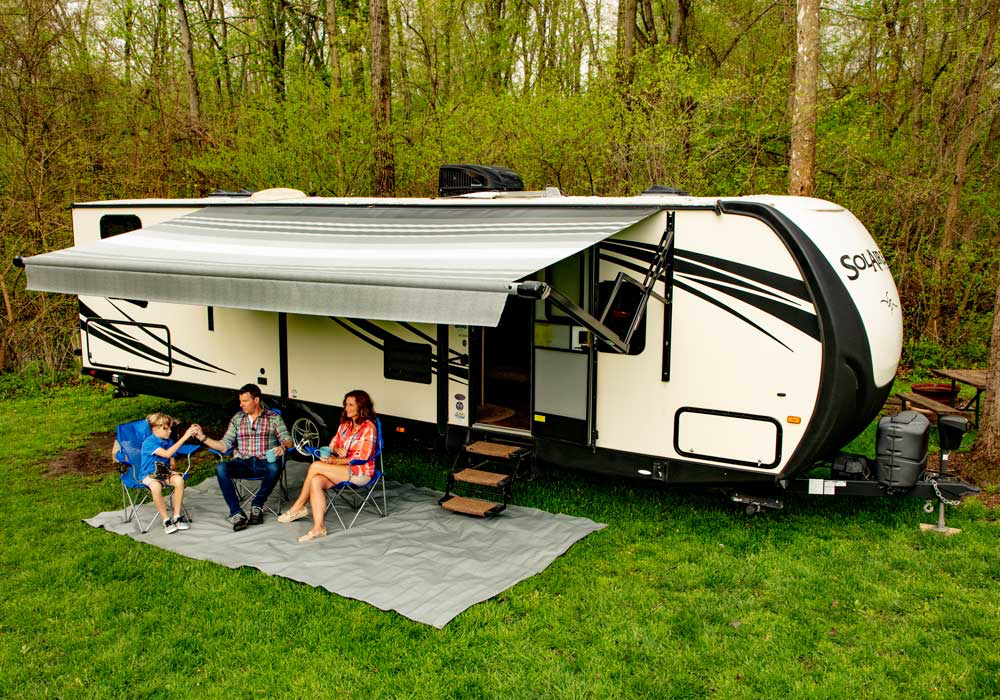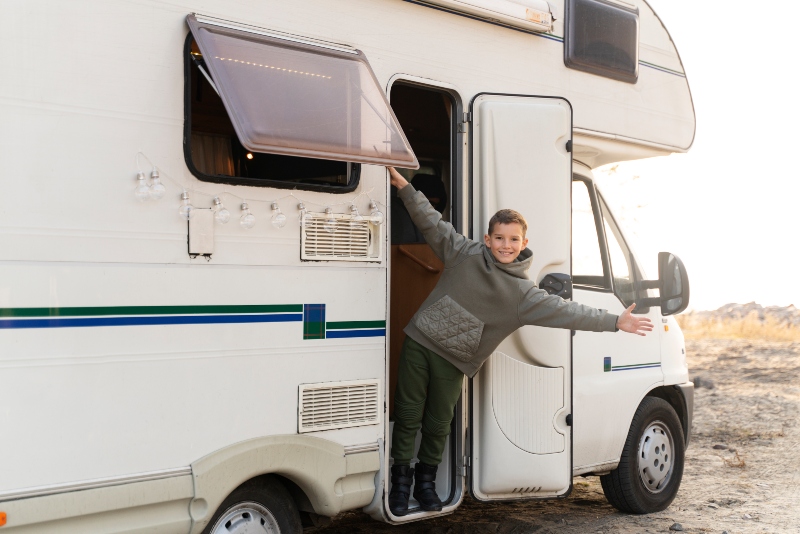What Is an RV Slide Out System?
An RV slide out system is the engineered mechanism that extends and retracts portions of your RV’s walls, creating more interior living space at the push of a button.Extended Comfort and Space
RV travel used to mean narrow walkways and cramped living quarters. Slide outs changed the game. By extending outward when parked, these systems create extra space for full-sized sofas, dining tables, or king and queen-sized beds. For long trips or full-time RV living, that added space translates into comfort, convenience, and a better quality of life on the road.Where Are Slide Mechanisms Located?
Slide mechanisms can be mounted in several locations, depending on the type:- Under the floor: Common with heavy-duty hydraulic or rack and pinion systems.
- In the wall: Slim, lightweight designs like Schwintek slides.
- On the roof: Less common, but some designs integrate overhead support and drive systems.
What is the Difference Between Electric vs. Hydraulic RV Slide-Out Systems?
RV slide outs operate either on electric motors or hydraulic pumps.- Electric slide outs are powered by 12V motors and geared tracks or cables. They are efficient, lighter, and easier to troubleshoot. They work well for smaller slides or lightweight RVs.
- Hydraulic slide outs use pressurized fluid and pumps to move larger, heavier rooms. They offer powerful extension and retraction, often used in Class A motorhomes with multiple large slide outs.
How to Identify Which Slide Out Mechanism Your RV Has
- Look under the RV for visible gears, racks, or arms.
- Check inside wall panels near the slide for motor housings.
- Refer to your RV’s manual or manufacturer’s label on the slide.
- Hydraulic lines are a clear sign of a fluid-driven system.
- Slim metal tracks running vertically are often Schwintek mechanisms.
The Most Common Types of RV Slide Out Mechanisms
There are several RV slide out mechanism types, each designed for different rigs and purposes. From heavy-duty hydraulic systems to lightweight wall-mounted tracks, every type has its strengths and weaknesses. Below, we break down the most common slide out systems you’ll encounter so you can better understand how they work and what to expect from them over the long haul.Rack and Pinion Slide-Out Mechanisms
- Heavy duty gear-driven design.
- Ideal for large, heavy slide rooms.
- Provides flush floor transitions.
- Requires lubrication and alignment checks.
Cable-Driven Slide-Out Mechanisms
- Uses high-tensile cables routed through pulleys.
- Lightweight and efficient, especially for smaller RVs.
- Easier to repair compared to rack systems.
- Cables must remain tensioned and free of frays.
Schwintek Slide-Out Mechanisms
- Popular modern design with vertical aluminum tracks in the wall.
- Lightweight, compact, and easy to spot.
- Best for smaller, lighter slides like bedrooms.
- May struggle with very heavy or wide slide outs.
Power Gear Slide-Out Mechanisms
- A variation of electric rack systems.
- Reliable, straightforward, and commonly used by major RV brands.
- Offers solid performance for mid-sized rooms.
Hydraulic Slide-Out Mechanisms
- The powerhouse of slide systems.
- Handles multiple large slides simultaneously.
- Common in Class A motorhomes.
- Requires monitoring of hydraulic fluid levels and seals.
Other Variations (Flush Floor, Hybrid, etc.)
- Some systems combine gears and hydraulics for specialized needs.
- Flush floor slides sit level with the RV interior when extended, enhancing comfort and design.
RV Slide Out Mechanism Strengths and Limitations
Each type of RV slide out mechanism has its own strengths and limitations. The table below offers a quick comparison of how the main systems differ in power source, ideal use cases, and maintenance needs—helping you choose the best option for your RV.| Mechanism Type | Power Source | Best For | Key Strength | Key Limitation |
| Rack & Pinion | Electric | Large heavy rooms | Durable, reliable, long proven design | Needs regular lubrication |
| Cable-Driven | Electric | Small to mid slide outs | Lightweight, flexible design | Cable wear and tension issues |
| Schwintek | Electric | Small slide outs | Compact and easy to install | Not ideal for heavy slide outs |
| Power Gear | Electric | Mid size | Advanced engineering, smooth operation, dependable | Moderate maintenance |
| Hydraulic | Hydraulic Pump | Large RVs, multiple slides | Strongest, fastest, handles heavy loads | Requires fluid maintenance, higher cost |
Which RV Slide Out System Is Best for You?
The best system depends on your RV’s size, how often you travel, and how much weight your slides carry. Weekend travelers in smaller rigs may find cable or Schwintek systems perfectly suited, while full-time RVers or Class A owners benefit from the strength of hydraulic or rack and pinion systems. Dealers and installers can guide you to the best RV slide out system by balancing durability, cost, and ease of maintenance.Essential Maintenance Tips for RV Slide Out Mechanisms
Maintaining your RV slide out mechanism ensures smooth operation and extends the life of your rig. From cleaning to lubrication, regular care is essential. By following a few simple practices, you can avoid costly repairs and keep your travels stress-free.Regular Cleaning and Inspection
- Use a slide out cover to keep tracks, gears, and seals free of dirt and debris.
- Check for rust, corrosion, or frayed cables.
- Inspect motor housings and hydraulic lines regularly.
Lubrication and Conditioning
- Use manufacturer-approved lubricants for gears and seals.
- Condition rubber seals to prevent cracking and leaks.
- Avoid over-lubrication, which can attract dirt.
Checking Seals and Alignment
- Look for gaps where light shows through seals.
- Adjust alignment promptly to prevent uneven wear.
- Replace worn seals to protect against leaks and drafts.

